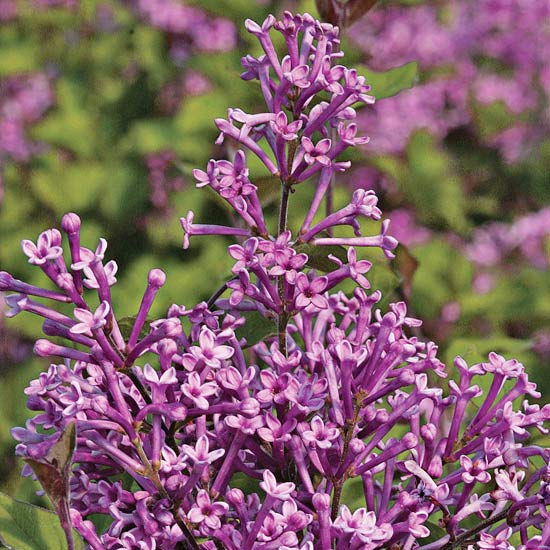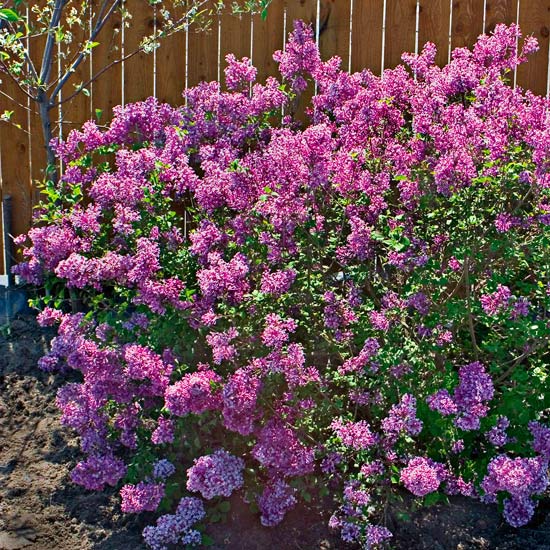






Reblooming, or remontant, lilacs were first noted in the early twentieth century; they are distinctive because they flower more than once per season. Bloomerang lilac (Syringa 'Penda') was introduced in 2009 and has been a runaway success since then.
An older variety of reblooming lilac, Josee, has been popular with gardeners who wanted to enjoy the sights and scent of a lilac in summer. It was hybridized in France in the 1970s. Josee is believed to be one of the parents of Bloomerang lilac.
Bloomerang, which is considered a dwarf flowering shrub, reaches a mature height and spread of 4-5 feet. Like many similar shrubs and bushes, it is hardy to Zone 3, although it tends to do better in cooler areas, such as those above Zone 7.
Bloomerang lilac can be planted like any other container-grown shrub, with a hole deep enough for the root ball but twice as wide. Syringa Bloomerang can be planted any time of the year, but springtime gives the gardener a chance to enjoy it for the whole growing season. Bloomerang lilac also does best in fertile, well-drained soils.

Considered by many to be the most consistent and prolific reblooming lilac, Bloomerang makes its initial heavy bloom in mid-May. In June the dwarf flowering shrub rests, then begins reblooming in July, continuing until frost. The difference between the two blooming seasons is the size of the panicles: Those in summer and fall are not as large as those in spring. However, every single branch on this reblooming lilac bears flowers. Bloomerang is a reblooming lilac that's upright, with fountainlike, long branches that arch gracefully toward the ends. As long as it is growing, it is blooming.
Unlike many lilacs, Bloomerang hasn't shown much susceptibility to common diseases including powdery mildew, pseudomonas, and phytophthora.
Many reblooming lilacs range in color from pale pink to magenta, which makes the lilac tone of Bloomerang a rarity -- and extremely popular. The purple flower hue of these shrubs also darkens in color in summer and fall. Like other lilacs, the Bloomerang blooms are scented and make for good cut flowers in bouquets.
Bloomerang lilac reblooms on new growth, and light pruning and fertilizing encourages lots of that. Just after this dwarf flowering shrub blooms, Bloomerang should be lightly pruned. It can also be deadheaded, which allows the plant to divert its energy into growth instead of seed ripening. Fertilizer formulated specifically for woody plants can also be used. However, if you don't prune or fertilize, the plant will still put on new growth and rebloom.
There are two approaches for integrating companion plants, shrubs, and bushes with this reblooming lilac. First, pair it with perennials and shrubs that bloom along with the lilac flowers in early spring, like bleeding heart, Solomon's seal, Siberian iris, catmint, and azalea. Or, you can pair this reblooming lilac with shrubs and plants that flower when Bloomerang lilac is taking its early to midsummer rest, such as daylilies, Asiatic lilies, and purple coneflower, as well as phlox, which spans the season. Good late-summer- and fall-flowering companions include evening primrose, sedum, and mums.
Learn more about growing lilacs.
Copyright © www.100flowers.win Botanic Garden All Rights Reserved